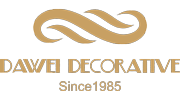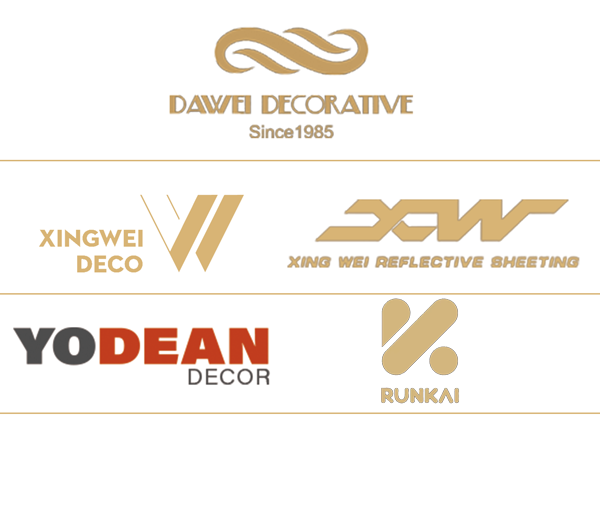What Materials Are Commonly Used For Decorative Wall Panels?
If you’re planning to install decorative wall panels in your home, you should first have an idea of what materials you can use. There are plenty of options, from laminates to faux brick to wood veneers.
Veneer
A veneer is a thin piece of wood with a decorative finish. It is used to cover a surface for a variety of purposes. A decorative veneer is a way of showing off the natural beauty of the wood.
A veneer is cut into very small sheets that are then glued together to form large, flat panels. They are typically less than three mm thick. However, they are available in a wide range of quality and thickness ratings.
There are several types of veneer, each designed to serve a specific purpose. Some are better than others for certain applications. To get the most out of a veneer, make sure you order from a reputable source.
A book-matched veneer is a term that means multiple slices of a wood veneer have been matched to create a uniform and interesting pattern. This is commonly used for furniture, wall panels, and double doors.
Using a rotary-cut veneer is another way to highlight the natural beauty of the wood. Typically made of oak or pine, rotary-cut veneers are very cheap. While they are visually appealing, they are not as impressive as a well-done multi-layer veneer.
The decorative veneer is a relatively new development in the veneer industry. While it is not the most durable type of veneer, it does offer many artistic possibilities. The best of these veneers uses a combination of technology and craft to create a unique, eye-catching product.
MDF
MDF is a common type of decorative wall panel used for a number of applications. It is a composite material of small pieces of wood and resins that are compressed under high heat and pressure. This makes it more durable and sturdy than other woods. Despite its durability, however, MDF does not hold screws well.
You can cut MDF panels using a table saw. However, it is a good idea to use a template when cutting. The template allows you to create uniform panels. Once you have finished cutting, sand the ends of the panel. This makes them join seamlessly.
Before you begin the cutting process, you should measure the walls and determine the number of panels that you will need. This will ensure that you will have the necessary amount of panels when you are ready to start painting.
If you want to save on expenses, you can buy MDF boards that are already shaped. These can be carved into colonial or bullnose designs, for example. They can also be laminated to match your home’s decor.
There are other types of decorative wall panels that can give your walls a unique look. One option is to install a layer of glass to create a shiny mirror finish. Another option is to install veneer panels. Veneer panels are commonly found in formal settings. When they are polished, they look sophisticated.
A third option is to use plywood. Plywood is much harder to work with than MDF. While it does hold screws better, it is not easy to cut. Also, plywood requires iron-on edge banding.
Wood
Wood is one of the most common materials used for decorative wall panels. It has a rich look that adds warmth to a room. Decorative wood wall paneling can be made of real or synthetic materials. The main advantage of a wood panel is that it will last for years.
A common wood panel is the tongue and groove panel. This type of panel has grooves that allow two flat pieces to be securely attached. They are easy to install and can add character to a room.
Raised paneling is another popular option for wall paneling. These panels are often found in bathrooms and kitchens. They have an uplifted center section that sits above the surrounding wooden panels.
Another popular type of wood wall paneling is board and batten. The boards are usually cut to be four or eight feet long. However, they can be customized to be shorter or longer depending on the space needed.
Another type of wood panel is shiplap. Originally used to cover waterproof ships, shiplap is now also used to cover houses. Shiplap is available in a variety of colors and finishes.
Finally, a non-structural type of wood wall paneling is MDF. MDF is a strong and flexible material that is commonly used as a solid wood substitute. It is also less expensive than real wood.
Depending on the materials used, a plank wall can be painted or stained to a different color. The cost will depend on the size of the area to be covered.
Chalkboard finish
Whether you’re looking for a DIY project, an inexpensive way to streamline grocery shopping or just a unique piece of wall art, chalkboard paint can be used on just about any surface. This low-cost paint, which comes in various colors, can be applied with ease and is easy to remove.
Before you start applying chalkboard paint, make sure the surface you’re going to cover is clean. If the wall is rough, it may need to be primed. Use fine-grit sandpaper to smooth out any bumps or scratches.
Once the surface is prepared, you’ll need to apply two coats of paint. You may need to do this more than once depending on the size and condition of the walls you’re working with. It takes approximately two hours to completely dry, but if you’re in a humid region, it could take up to six hours.
If you want to reapply the chalkboard paint after a few days, simply wipe it down with a damp cloth. You should consider using a low-tack pressure-sensitive adhesive if the surface is smooth. Some commercially available adhesives are designed to stay on the wall for many years.
Chalkboards are also available in an array of shapes and sizes. They’re perfect for home offices, kitchens, and play areas.
Chalkboards can be made from natural materials. However, they are most commonly manufactured out of synthetic materials. In fact, chalkboards have become so popular that more and more paint companies have developed products specifically designed to make them.
Shiplap cladding
Shiplap wood wall paneling is designed to resemble the look of a barn. This is a popular decorative design that is usually painted white. The panel can be installed either horizontally or vertically. However, installing it in a vertical position will make the room appear longer.
Shiplap is a great way to add charm to your home. Its unique overlapping structure creates a weatherproof seal. Historically, shiplap was used in a variety of applications. For example, it was installed on waterproof ships. Later, it was used to line the interior walls of houses.
Today, you can find shiplap in a wide variety of styles. Traditionally, it was built with a rounded edge on the tongue side and a chamfered edge on the groove side. In newer designs, the boards are notched.
Tongue and groove planks are also commonly used as wall cladding. Tongue and groove panels are made of wood, MDF, or metal. They can be used indoors or outdoors. These planks have a tongue and groove design that is characterized by a v-shaped profile.
When you are looking for wall cladding for your home, it’s important to choose a material that will be durable and last a long time. Wood is ideal, but there are also other options. You can use vinyl or fiber cement. Melamine is a good option if you want a moisture-resistant finish.
If you are unsure of how to install your panels, you can consult a professional. Many lumberyards will have a team of installers who will make the process easy. There are also tools you can purchase to help you get the job done.
Faux brick
Faux brick is a great way to create an accent wall, fireplace surround or niche. It is also easy to install and comes with many advantages.
The first of these is that faux brick is lighter and cheaper than real brick. You can also achieve the same effect with brick veneer, but you will need more skill and patience.
However, you might want to stick with a real brick if you are looking for a more permanent solution. Real brick is durable and can last for centuries. But, it will cost a lot more to replace a damaged brick.
There are many different types of faux brick. The most realistic faux brick is thin brick. These bricks are typically about half an inch thick. They are sometimes sold on vinyl mesh sheets.
One other type of faux brick is foam. This is made from a hard, lightweight material and can be painted to look like real brick. Besides creating a great brick wall look, it is also a lot less expensive than real brick.
As with other types of brick, you will need to attach the faux brick to a stable backing. If your bricks are too close together, it will be difficult to level the whole structure.
Another important part of installing a faux brick wall is to ensure that the attachment surface is clean. You can use sandpaper to sand off any tight edges.





Leave a Reply
Want to join the discussion?Feel free to contribute!